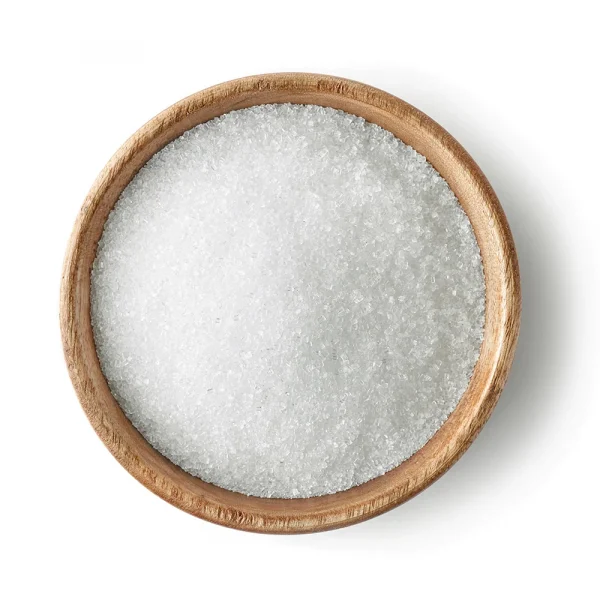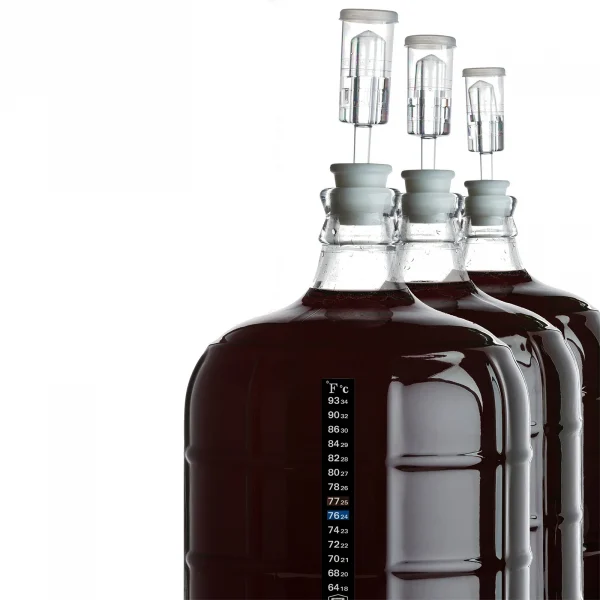
Backsweetening is the process of sweetening a liquid after fermentation. This technique is commonly used with fruit fermentations, like with cider and wines, or in meads, but less so with beer brewing. Backsweetening can be used in kombucha brewing to help counteract overly fermented, acidic batches. In most cases, back sweetening is done to enhance flavor and reduce overly dry or alcoholic tasting fermented beverages.
The basic idea of brewing or fermenting is to add yeast into a sweet mixture of sugar and water. In this mixture, the yeast consumes the sugar and converts it to carbon dioxide and ethanol, which is alcohol. Where that sugar comes from depends on the type of alcoholic beverage you’re crafting: the sugar in beer comes from grain, the sugar in wine from grapes, the sugar in kombucha from added table sugar, the sugar in mead from honey, and the sugar in cider from apples or other fruits.
Since fermentation relies on an external living thing (yeast), the conversion of sugars during the primary fermentation can happen at different speeds; sometimes, the yeast isn’t as cooperative as others. This can result in the finished beverage being too dry or too alcoholic tasting than your preference. In this case, you can opt to backsweeten and adjust the imbalance. When backsweetening, you add a sweetening agent, typically sugar, to the batch after completing the first fermentation has reached the desired alcohol content. Adding sugar after that point is an easy way to control the balance of the final product.
It should again be noted that while backsweetening can be done in any fermented beverage, it’s most common in wine, cider, mead, and kombucha. Most people don’t want a sweet beer.
There are a few primary methods you can use to backsweeten your beverage:

Whether you’re bottling or kegging, backsweetening by the glass is probably the easiest and most basic way to backsweeten. For this method, you pour your beverage and add in the desired amount of extra sugar before drinking. This is simple and highly controllable. Although it’s considered “cheating” by some, it’s just as effective as other methods!
In brewing, fermentation is broken into stages. The primary fermentation is carried out in a fermentation chamber where yeast can consume the sugar freely.
Step feeding is feeding additional sugar to your yeast throughout the primary fermentation. To understand this process, we must understand yeast alcohol tolerance. All yeast strains are different and have different alcohol tolerances which determines the yeast’s ability to continue fermentation in alcoholic solutions up to certain alcohol percentages. If a yeast’s tolerance is 12% ABV, then the yeast stops fermenting sugar once the liquid is 12% ABV. Step feeding, using the example above, would be adding sugar until the ABV reaches 12%. Now that the ABV is 12%, any additional sugar added to the batch will not be fermented by the yeast, so the additional sugar added is now sweetener.
Step feeding is feeding additional sugar to your yeast throughout the primary fermentation. To understand this process, we must understand yeast alcohol tolerance. All yeast strains are different and have different alcohol tolerances which determines the yeast’s ability to continue fermentation in alcoholic solutions up to certain alcohol percentages. If a yeast’s tolerance is 12% ABV, then the yeast stops fermenting sugar once the liquid is 12% ABV. Step feeding, using the example above, would be adding sugar until the ABV reaches 12%. Now that the ABV is 12%, any additional sugar added to the batch will not be fermented by the yeast, so the additional sugar added is now sweetener.

Varying consumption rates of sugar by yeast can lead to consistency issues. An easy way to fix that is to add something sweet that the yeast can’t consume. During the bottling or kegging phase of your beverage, you can add an artificial sweetener to bring up the sweetness. To the yeast, this isn’t food. So the yeast won’t be able to convert them to alcohol, so you’ll be able to taste all the sweetness. Just be sure to add these after your primary fermentation as the yeast interacting with artificial sweeteners could produce off-flavors. When adding sweeteners, do so slowly; you can always add more, but you certainly can’t take it out.
Backsweetening is a great way to get the sweetness you want out of your brewed beverage. Feel free to experiment to find the best option for your beverage. Have a question not covered in this article? Drop a comment in the section below.
